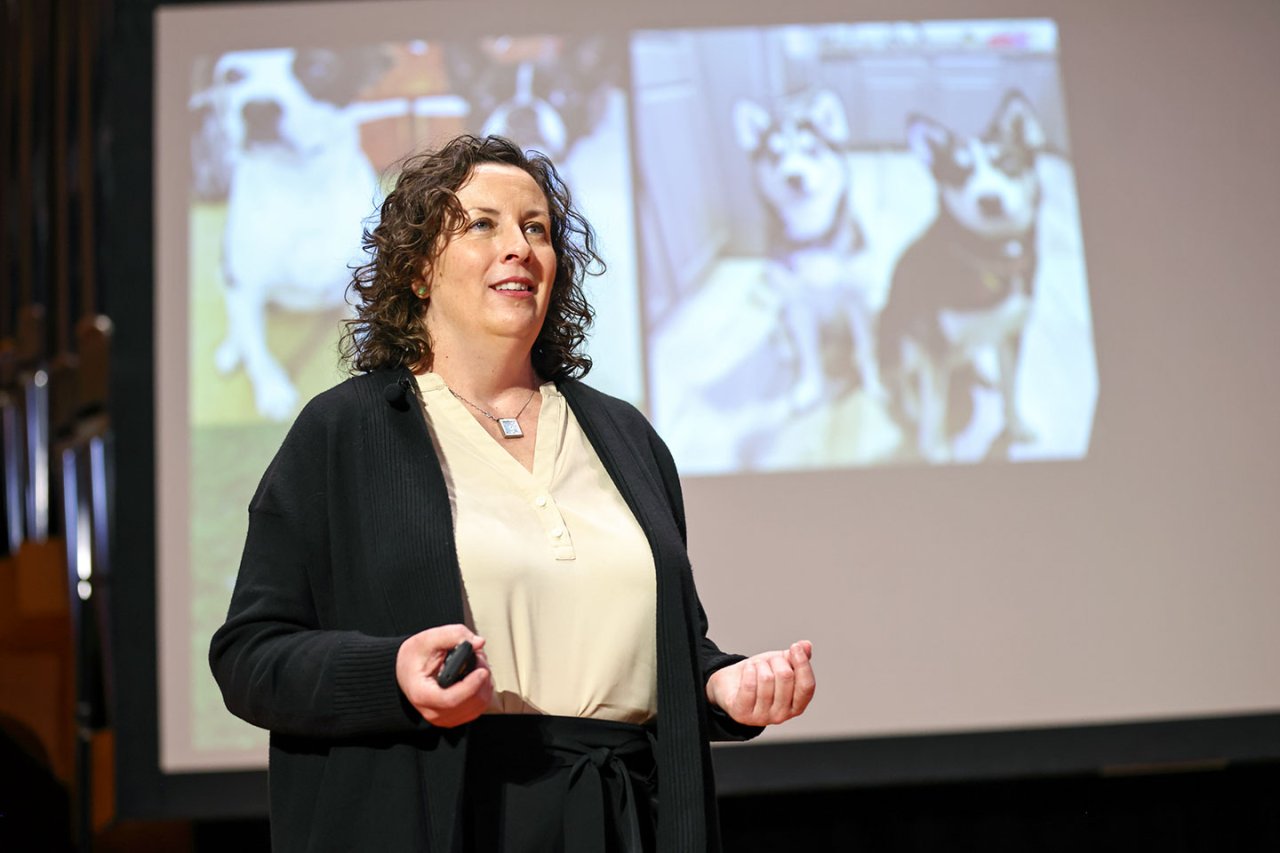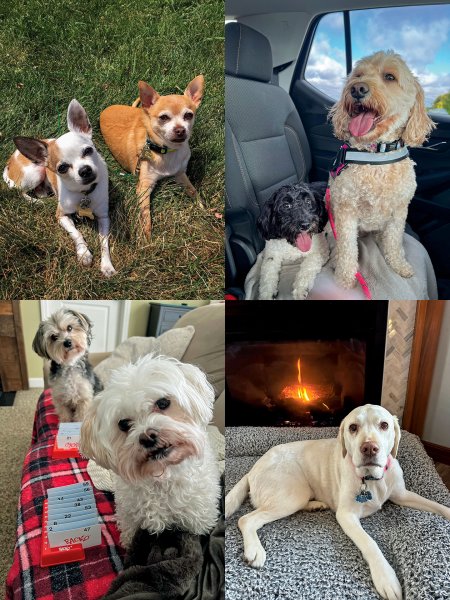The Evolution of Dogs, Accidental Best Friends
A Mini-Lecture From OWU's 2024 iQubed Event

By Shala Hankison '95, Associate Professor of Biological Sciences
To learn about one of the most incredible stories of animal evolution, you do not have to travel to remote islands. You do not have to hike into the deepest rainforest.
You can look no further than man's best friend.
Dogs are our oldest domesticated animal. Dogs were domesticated from their wolf ancestors over 15,000 years ago. But the more that we learn about that pathway from ancient wolf to trusty companion, the more we realize just how much of it was accidental.
You see, even at the beginning, dogs started domesticating themselves. Just like modern wolves, early wolves had a wide range of fear responses, and those with the lowest fear responses were more likely to hang out around the edges of early human settlements—eventually, even interacting with those humans.
Only then did people take over and start breeding for some of those traits they found most useful, like barking when there was a threat, participating in the hut, or being companions.

But that early accidental domestication was just the beginning, because as you can see when you look at dogs today, there are combinations and linked pathways between behavior and genetics. So, by accidentally or intentionally selecting for tame behavior, we accidentally changed the appearance of our dogs. By selecting just on the basis of tame behavior, we ended up with dogs with white muzzles, spots on their coats, floppy ears, curly tails, and even that shorter nose that we associate with many of our dog breeds.
Dogs have evolved with humans for centuries, and this has impacted every aspect of their evolution—even their hormones.
You may have heard of the hormone oxytocin, the cuddle hormone. Okay, that's really oversimplified, but you get a rise in oxytocin when you have feelings of love and bonding, when you hold your partner's hand, or when you gaze at a family member you love.
It won't surprise pet owners to learn that you also get an oxytocin boost when you look at your pet.
What's really fantastic: Dogs get that oxytocin boost when they look back at you. This doesn't happen with tame wolves. This doesn't even happen when dogs look at a stranger—just when dogs look back at their people.
So, while the jury may still be out on cats, dogs have evolved to love us back.
You can watch all of OWU's iQubed mini-lectures at youtube.com/OhioWesleyanU.
